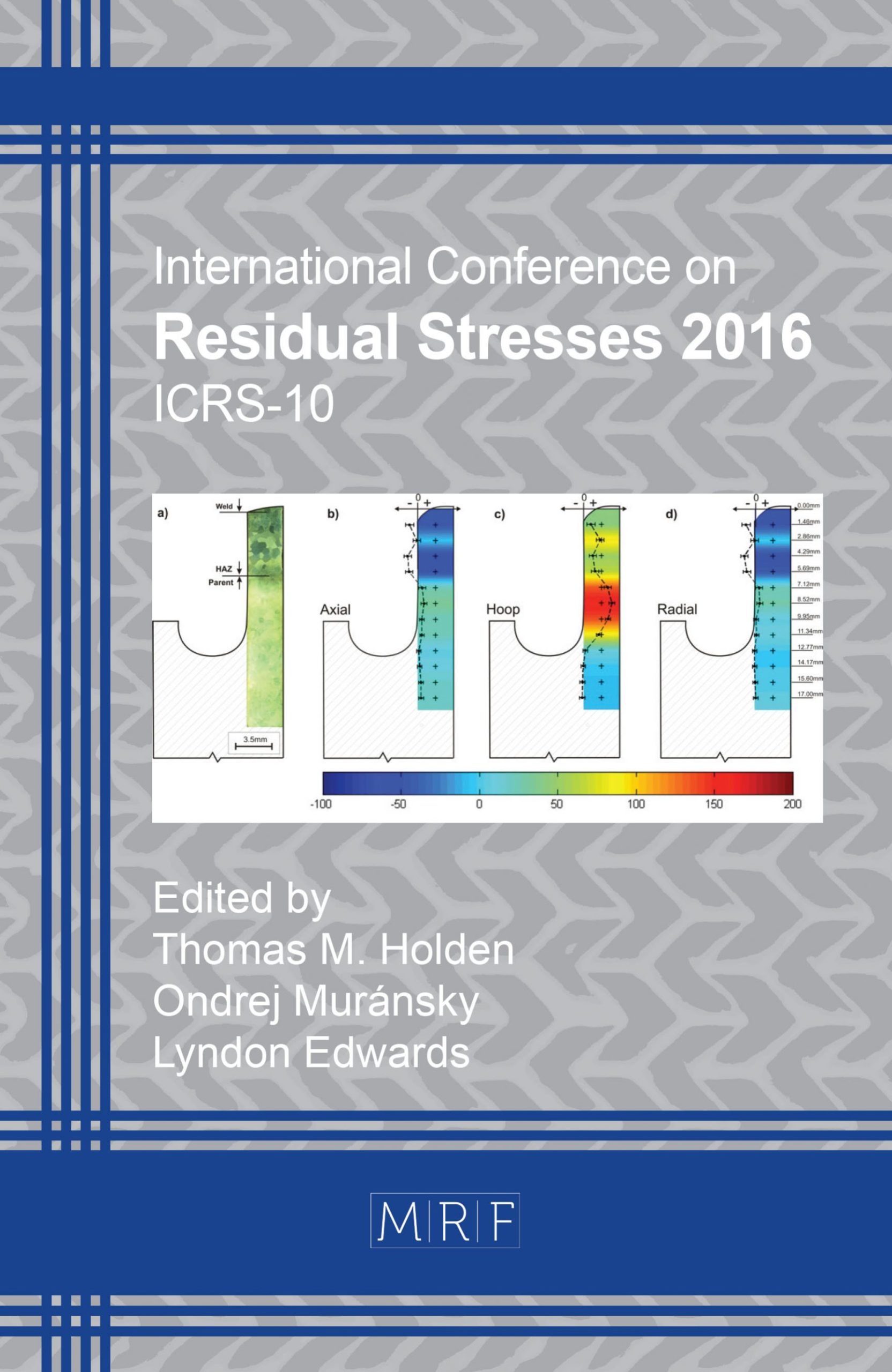Residual Stress Study of Al/Al Laminates Processed by Accumulative Roll Bonding
L. Su, C. Lu, H. Li, V. Luzin, H. Wang, K. Tieu
download PDFAbstract. In this work accumulative roll bonding (ARB) was used to combine AA1050 and AA6061 sheets to produce AA1050/AA1050, AA6061/AA6061 and AA1050/AA6061 laminates with ultrafine grained (UFG) structure. Two sheets of starting materials were roll bonded with 200 °C preheating for 180 s before rolling. The through-thickness residual stress distribution of these laminates processed up to two cycles of ARB was determined by neutron diffraction with spatial resolution of 0.2 mm through 1.5 mm thickness. The measurements also required high accuracy of only few MPa since residual stresses in the laminates peaked at only about 15 MPa. The laminates composed of the same material (AA1050/AA1050 and AA6061/AA6061) showed symmetric residual stress profile with tensile stress at the centre of the sheets and compressive stress at the surfaces. The AA1050/AA6061 laminates showed asymmetric distribution with residual tensile stress in the AA1050 layer and compressive stress in the AA6061 layer. A finite element model (FEM) was used to simulate the residual stress distribution and the results were in agreement with the measured results qualitatively.
Keywords
Accumulative Roll Bonding, Residual Stress, Neutron Diffraction, Finite Element Model
Published online 12/22/2016, 6 pages
Copyright © 2016 by the author(s)
Published under license by Materials Research Forum LLC., Millersville PA, USA
Citation: L. Su, C. Lu, H. Li, V. Luzin, H. Wang, K. Tieu, ‘Residual Stress Study of Al/Al Laminates Processed by Accumulative Roll Bonding’, Materials Research Proceedings, Vol. 2, pp 359-364, 2017
DOI: http://dx.doi.org/10.21741/9781945291173-61
The article was published as article 61 of the book Residual Stresses 2016
![]() Content from this work may be used under the terms of the Creative Commons Attribution 3.0 licence. Any further distribution of this work must maintain attribution to the author(s) and the title of the work, journal citation and DOI.
Content from this work may be used under the terms of the Creative Commons Attribution 3.0 licence. Any further distribution of this work must maintain attribution to the author(s) and the title of the work, journal citation and DOI.
References
[1] T. Hausöl, H.W. Höppel, M. Göken, Tailoring materials properties of UFG aluminium alloys by accumulative roll bonded sandwich-like sheets, J. Mater. Sci. 45 (2010) 4733-4738. http://dx.doi.org/10.1007/s10853-010-4678-y
[2] M.Z. Quadir, O. Al-Buhamad, L. Bassman, M. Ferry, Development of a recovered/recrystallized multilayered microstructure in Al alloys by accumulative roll bonding, Acta Mater. 55 (2007) 5438-5448. http://dx.doi.org/10.1016/j.actamat.2007.06.021
[3] A. Weck, P. Bisaillon, L. Nong, T. Meunier, H. Jin, M. Gallerneault, Mechanical properties of the aluminum roll-bond laminate AA5005-AA5083-AA5005, Mater. Sci. Eng. A 528 (2011) 6186-6193. http://dx.doi.org/10.1016/j.msea.2011.04.037
[4] W. Razny, F.D. Fischer, G. Finstermann, W. Schwenzfeier, K. Zeman, The influence of some rolling parameters on the residual stresses after rolling, J. Mater. Process. Tech. 60 (1996) 81-86. http://dx.doi.org/10.1016/0924-0136(96)02311-4
[5] U.S. Dixit, P.M. Dixit, A study on residual stresses in rolling, Inter. J. Mach. Tool. Manu. 37 (1997) 837-853. http://dx.doi.org/10.1016/S0890-6955(96)00052-1
[6] M.B. Prime, M.R. Hill, Residual stress, stress relief, and inhomogeneity in aluminum plate, Scripta Mater. 46 (2002) 77-82. http://dx.doi.org/10.1016/S1359-6462(01)01201-5
[7] L. Su, C. Lu, A.K. Tieu, G. Deng, X. Sun, Ultrafine grained AA1050/AA6061 composite produced by accumulative roll bonding, Mater. Sci. Eng. A 559 (2013) 345-351. http://dx.doi.org/10.1016/j.msea.2012.08.109
[8] M.T. Hutchings, P.J. Withers, T.M. Holden, T. Lorentzen, Introduction to the Characterization of Residual Stress by Neutron Diffraction, Taylor & Francis Group, LLC, Broken Sound Parkway NW, 2005, pp. 201-204.
[9] B. Denkena, Y. Altintas, P. J. Arrazola, T. Aoyama, D. Axinte, S. Dreier, B. Denkena, Determination of Residual Stresses in Plate Material by Layer Removal with Machine-integrated Measurement, Procedia CIRP 24 (2014) 103-107. http://dx.doi.org/10.1016/j.procir.2014.07.137































